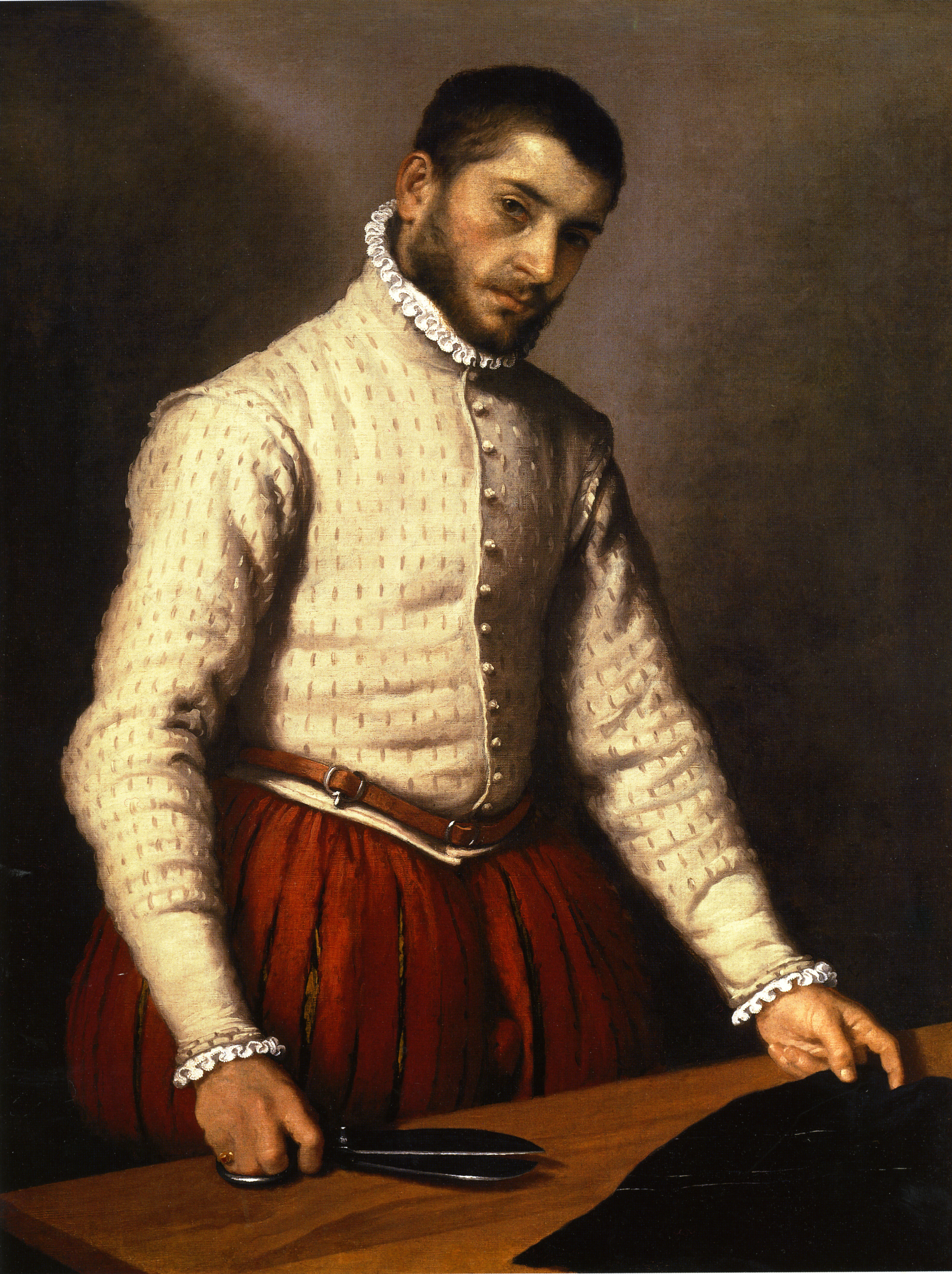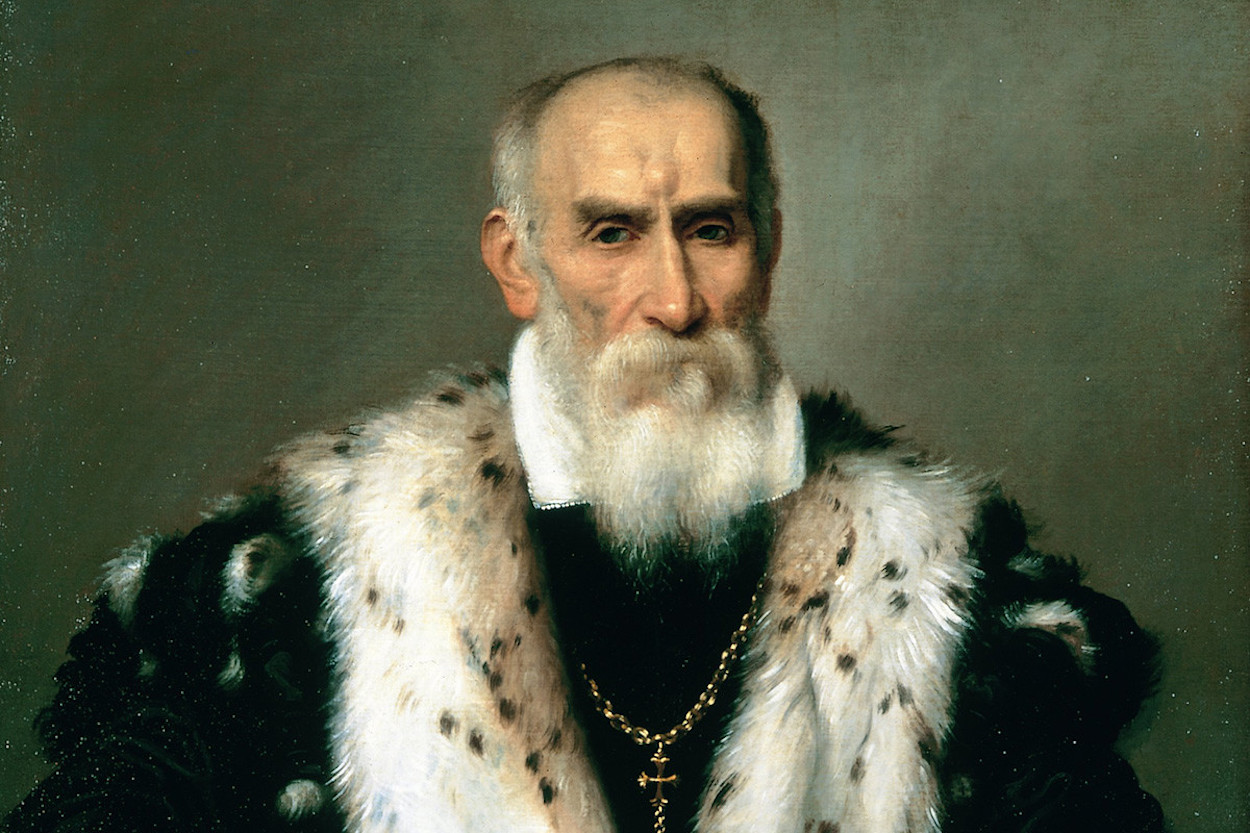"Portrait of a Tailor" was painted by artist Giovanni Battista Moroni around 1570, towards the end of his career. Giovanni Battista Moroni is an Italian late Renaissance painter, mostly known for his portraits and altarpieces. This portrait shows us a tailor (or, rather, a trader of fabrics) standing in front of a bench, where a dark cloth lies. The tailor holds a pair of scissors in his right hand and the cloth with his left hand. His face and penetrating gaze are turned towards the viewer, giving the impression that the tailor's activity was interrupted by the viewer's presence.
What is so special about this portrait? The quality of the painting is definitely high: the clothes of the tailor have been painted to a high degree of precision and the warm colours add a sense of intimacy to the portrait. In addition, the portrait is also very realistic: the sitter has an expressive gaze and is painted at work, as if Moroni wanted to portray the tailor as he actually was. This is typical of Moroni's work: the artist used to portray many of his subjects "from nature", i.e. he produced lifelike portraits representing the sitter in a natural way.
None of the above features, as important as they are, makes this portrait really stand out, though. The special thing about this portrait is the choice of the subject: a tailor! Up to that point, most painters had only portrayed members of the aristocracy, the church or social and financial elites. This is one of the first portraits in Western art where a working class member is painted and given the same dignity enjoyed by members of high society. The tailor is relatively well-off - we can guess this from his elegant and elaborate clothes as well as the golden ring set with a ruby on his right hand - and he seems comfortable and proud of his trade, or at least this is the feeling his gaze, posture and appearance convey to the viewer: still, this is a very unconventional choice of subject for an artist.
Although relatively renowned during his lifetime, Moroni did not enjoy the widespread success he probably deserved. According to tradition, this is mostly due to the fact that Giorgio Vasari (the first Italian art historian and author of "Lives of the Most Eminent Painters, Sculptors, and Architects") did not travel to Bergamo where most of Moroni's paintings could be found: thus, Moroni was not included in Vasari's book, which negatively affected Moroni's later recognition. Although to a lesser extent, in some ways Moroni's fate resembles that of Caravaggio: success during the artist's lifetime, oblivion after the artist's death, renewed interest and critical as well as public acclaim centuries later. As if chance (e.g., the exclusion by Vasari) and changing fashions and taste in the arts world somehow played their tricks, until these artists could be seen with fresh new eyes.
Lara


 Giovanni Battista Moroni
Giovanni Battista Moroni